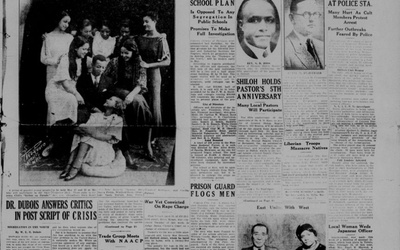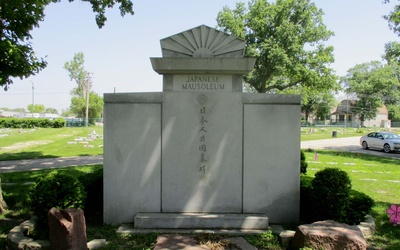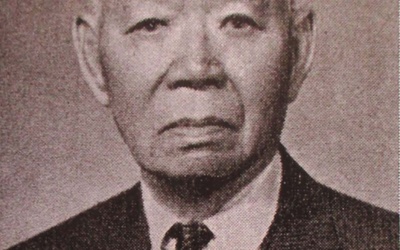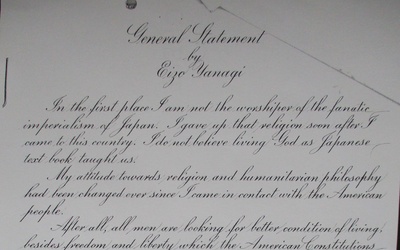Suspicious Points of Contact in Pre-War Chicago

This series tells the stories of Japanese and Japanese Americans in Chicago and the Midwest prior to and during World War II, stories that were very different from those of Japanese on the West Coast. Although the Japanese population, along with the number of Japanese arrested by the FBI right after the war broke out, were both small (less than 500 and 20 respectively), the US government’s watchful eyes had been suspicious of Japanese government espionage carried out by Japanese Chicagoans who had daily contact with African Americans since the 1930s. The series focuses on the lives of four Japanese in Chicago and the Midwest who were arrested on suspicion of espionage.
Stories from this series
The Japanese Consulate and Naka & Pearl Nakane - Part 1
Aug. 19, 2019 • Takako Day
Introduction On January 30, 1941, a long telegram was sent from Yosuke Matsuoka, a minister of foreign affairs, to Japanese embassy in Washington and forwarded to consulates in the US, including the one in Chicago. The telegram instructed that the ministry had changed the emphasis of its publicity and propaganda work to strengthen intelligence work in the US. One of the programs Matsuoka mapped out was to “make investigations of all anti-Semitism, communism, movements of Negroes, and labor movements” and …
The Japanese Mutual Aid Society and Charles Yasuma Yamazaki - Part 2
June 19, 2019 • Takako Day
Read Part 1 >> Charles Yasuma Yamazaki and the African American Community Yamazaki led an interesting life, a life full of change. Born in Kochi in April 1877, he left home for better living and arrived in Seattle as a seaman in 1899.1 After working in railroad construction in Puyallup, Washington and Helena, Montana from 1899 to 1901,2 in December 1902, he enlisted in the U.S. Navy in Boston as a wardroom steward on the USS Raleigh, with a five …
The Japanese Mutual Aid Society and Charles Yasuma Yamazaki - Part 1
June 18, 2019 • Takako Day
Background Pre-World War II Chicago had no segregated residential enclaves for Japanese residents like the Japantowns and Little Tokyos on the West Coast, but this did not mean there wasn't a Japanese community. Actually, there was a Japanese community, but it was more of an invisible mental space in the Japanese residents’ minds than a physical community. Although Japanesehad livedscattered throughout Chicago since the 19th century, they certainly had formed various community groups and organizations. Becoming members of those groups …
Eizo Yanagi - Part 2
March 28, 2019 • Takako Day
Read Part 1 >> Returning to our questions about Eizo Yanagi, what kind of contacts did he actually have with African Americans in Chicago? Most of the following information on Yanagi can be found in his file at the National Archives and Records Administration (NARA) in Washington DC.1 Eizo Yanagi Eizo Yanagi worked as an engraving artist in pre-war Chicago and made his living by producing diplomas and certificates. He also had an English name, Frank Young (and at times …
Eizo Yanagi - Part 1
March 27, 2019 • Takako Day
Introduction Soon after the December 7, 1941 attack on Pearl Harbor, the FBI began a nationwide campaign to detain “enemy aliens,” conducting home searches and detentions immediately after the outbreak of the war. They also closed places where Japanese people gathered, such as Japanese restaurants and churches.1 In Chicago, eight Japanese art goods stores closed.2 On the night of December 7, four windows at the Japanese-owned gift shop, Oriental Trading Company, were smashed by heavy ball bearings, one of which …







